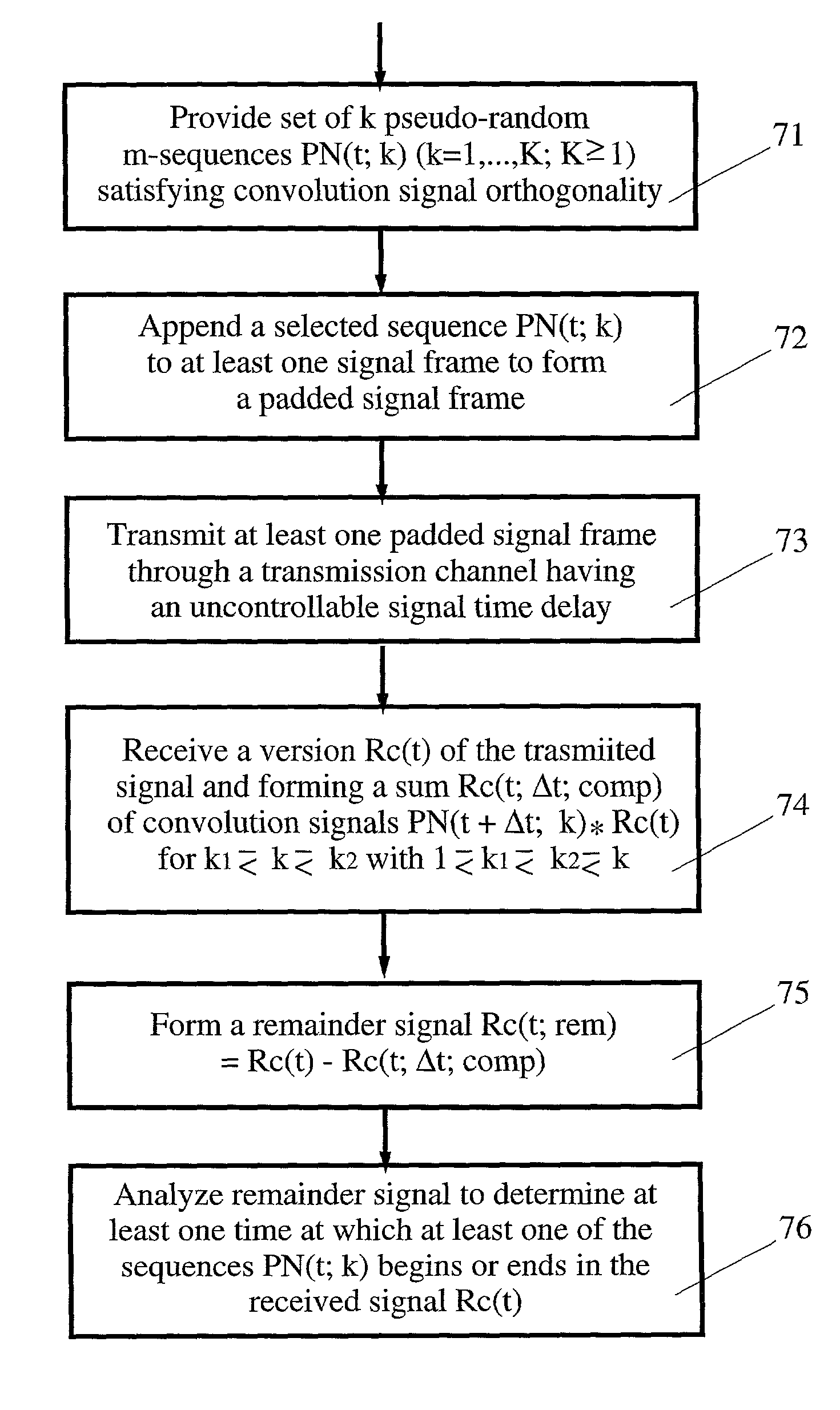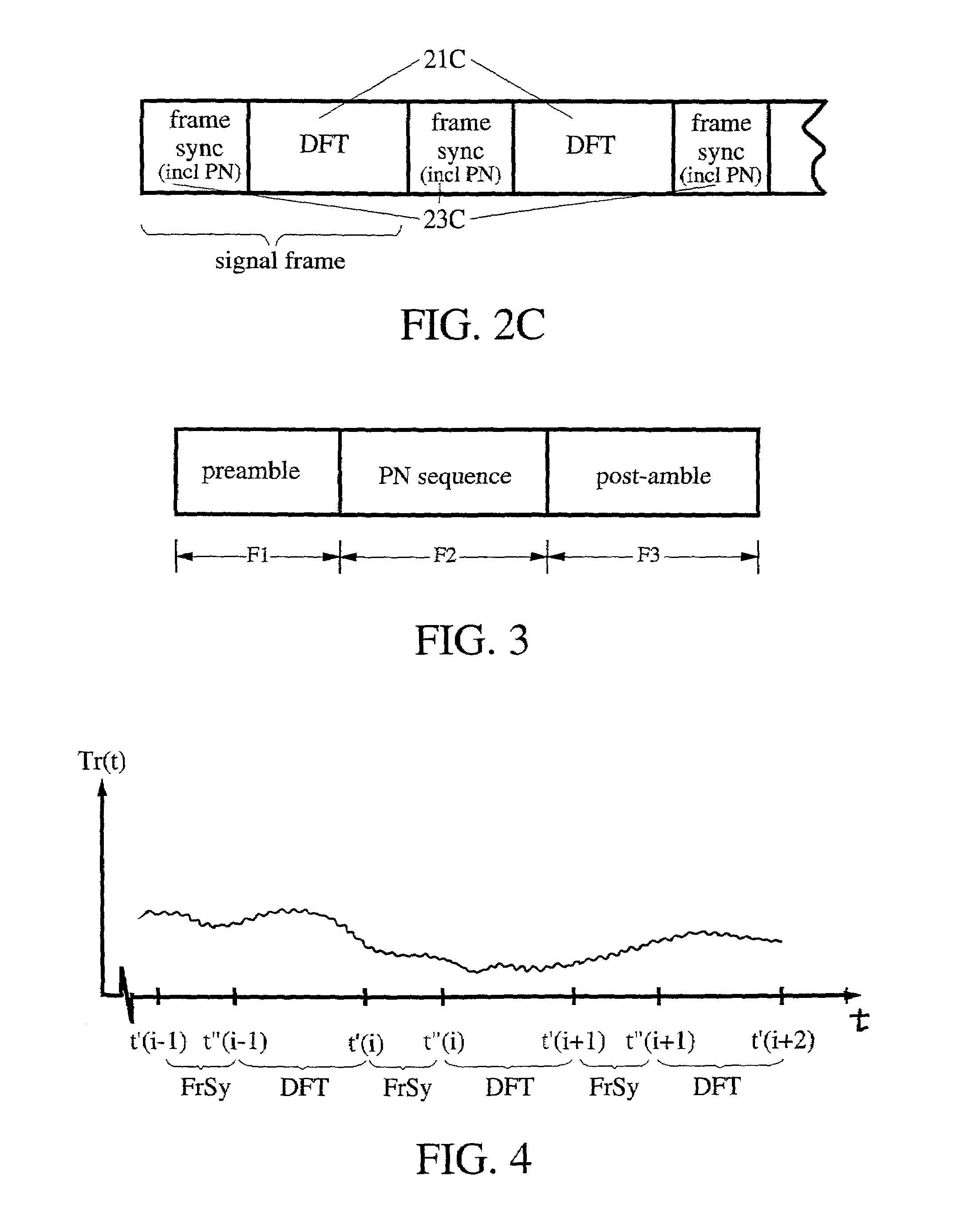Pseudo-random sequence padding in an OFDM modulation system
- Summary
- Abstract
- Description
- Claims
- Application Information
AI Technical Summary
Benefits of technology
Problems solved by technology
Method used
Image
Examples
Embodiment Construction
[0013]An OFDM format for a signal in first and second configurations is shown in FIGS. 1A and 1B. In the format of FIG. 1A, a DFT (or FFT) block 11A is preceded by a cyclic prefix segment 13A that serves as a guard interval for the DFT block. Use of a guard interval, or its equivalent, is required with an OFDM format, in order to account for the possible presence of multipath signals in a received signal. In the format of FIG. 1B, a DFT block is followed by a zero-padding segment that also serves as a guard interval for the DFT block.
[0014]A pseudo-random or pseudo-noise (PN) sequence, a coded m-sequence of symbols, is used in an OFDM format. An m-sequence is a sequence of symbols, usually 0's and 1's, of a selected length that satisfies three requirements: (1) the number of symbols of different types (e.g., the number of 0's and the number of 1's) is “balanced”, or approximately the same, over the set of such sequences; (2) the Boolean sum of any two m-sequences, and the result of ...
PUM
 Login to View More
Login to View More Abstract
Description
Claims
Application Information
 Login to View More
Login to View More - R&D
- Intellectual Property
- Life Sciences
- Materials
- Tech Scout
- Unparalleled Data Quality
- Higher Quality Content
- 60% Fewer Hallucinations
Browse by: Latest US Patents, China's latest patents, Technical Efficacy Thesaurus, Application Domain, Technology Topic, Popular Technical Reports.
© 2025 PatSnap. All rights reserved.Legal|Privacy policy|Modern Slavery Act Transparency Statement|Sitemap|About US| Contact US: help@patsnap.com



